Home>Interior Design>20 Exterior Entryway Designs With Charming Curb Appeal
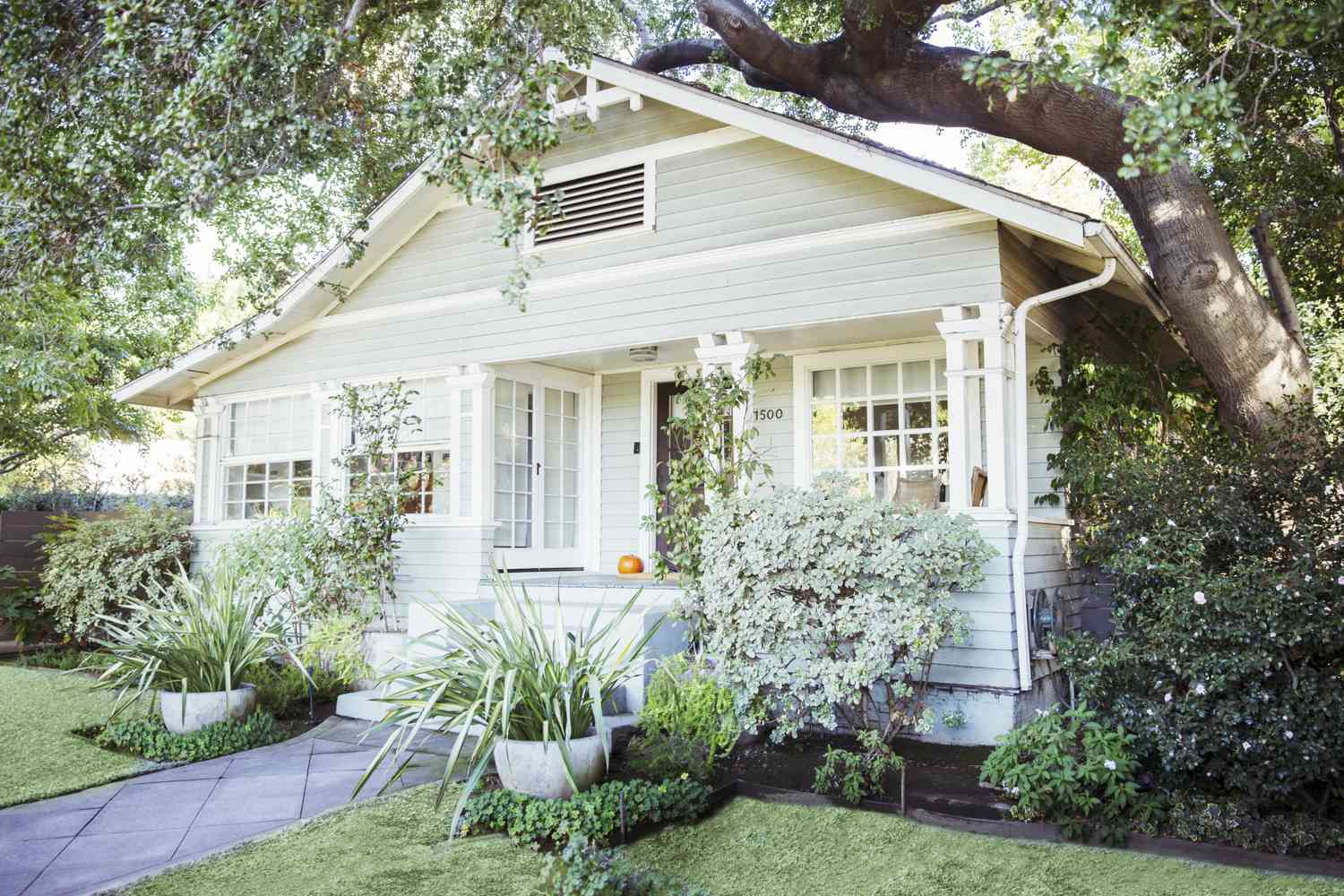

Interior Design
20 Exterior Entryway Designs With Charming Curb Appeal
Modified: November 2, 2024
Enhance your home's curb appeal with these gorgeous exterior entryway designs. From classic to modern, find inspiration for charming and welcoming entranceways. Explore our interior design ideas today!
(Many of the links in this article redirect to a specific reviewed product. Your purchase of these products through affiliate links helps to generate commission for Storables.com, at no extra cost. Learn more)
Introduction
Welcome to our comprehensive guide on exterior entryway designs with charming curb appeal. Your home’s entryway is the first thing that guests and passersby see, and it sets the tone for the rest of your interior design. A well-designed front porch or entryway can create a welcoming atmosphere, elevate the overall aesthetic of your home, and increase its curb appeal.
In this article, we will explore 20 different exterior entryway designs that range from classic and traditional to modern and minimalist. Each design showcases unique features and architectural elements that can inspire you to create a stunning entrance to your home.
Whether you prefer a grand front entryway that makes a bold statement or a cozy cottage-style entrance that exudes charm, this guide has something for everyone. We will discuss the key characteristics of each design style, provide tips on how to achieve the look, and highlight the elements that make each entryway design stand out.
Additionally, we will discuss the importance of curb appeal and how a well-designed entryway can enhance the overall value of your home. We’ll also explore the different architectural styles that influence entryway design, from colonial and Victorian to modern and Mediterranean.
So, if you’re looking for inspiration and ideas to transform your front porch or entryway into a welcoming and visually appealing space, you’ve come to the right place. Let’s dive into the wonderful world of exterior entryway designs and discover the perfect style for your home.
Key Takeaways:
- Embrace the diverse range of entrance designs, from welcoming front porches to grand entryways, to create a captivating and memorable first impression that reflects your personal style and enhances your home’s aesthetic.
- Incorporate the right elements and features, such as natural light, functionality, and cohesive landscaping, to transform a simple entrance into a visually appealing and welcoming space that sets the stage for your home’s interior.
Welcoming Front Porch Designs
A welcoming front porch is the perfect way to invite guests into your home and create a warm and inviting atmosphere. This design style focuses on creating a cozy space where you can relax and enjoy the outdoors. Here are some key features and elements that define welcoming front porch designs:
- Comfortable Seating: One of the essential elements of a welcoming front porch is comfortable seating. Whether it’s a pair of rocking chairs, a porch swing, or a cozy bench, having a place to sit and relax is key. Consider choosing weather-resistant cushions and throw pillows in vibrant colors to add a pop of personality to your porch.
- Lush Greenery: Incorporating plants and greenery on your front porch not only adds visual appeal but also brings a sense of nature and freshness to the space. Consider placing potted plants, hanging baskets, or even a small vertical garden to create a lush and inviting atmosphere.
- Cozy Lighting: Proper lighting can transform your front porch into a magical space, especially in the evenings. Install soft, warm lighting fixtures such as string lights, lanterns, or sconces to create a cozy and inviting ambiance.
- Personal Touches: Adding personal touches to your front porch is a great way to showcase your style and create a welcoming atmosphere. Consider hanging a personalized doormat, displaying decorative signs or artwork, or adding a small outdoor rug to add warmth and personality to the space.
When it comes to color schemes, welcoming front porch designs often feature warm and inviting hues such as soft neutrals, earthy tones, and pops of vibrant colors. This creates a visually appealing and harmonious space that instantly makes guests feel at home.
Incorporating natural materials such as wood, wicker, and stone can further enhance the cozy and inviting atmosphere of a welcoming front porch. Consider using these materials for furniture, flooring, and even decorative accents to achieve a cohesive and harmonious look.
Overall, the key to creating a welcoming front porch design is to prioritize comfort, warmth, and a personal touch. Pay attention to details such as seating, greenery, lighting, and personal elements to transform your front porch into a cozy and inviting space that sets the tone for your home.
Grand Front Entryways
A grand front entryway is all about making a bold statement and creating a sense of elegance and grandeur. This design style is perfect for homeowners who want to make a lasting impression and showcase their home’s architectural features. Here are some key elements that define grand front entryways:
- Grand Entrance Door: The focal point of a grand front entryway is undoubtedly the entrance door. Opt for a statement door made of high-quality materials such as solid wood or wrought iron. Consider intricate details like decorative glass panels, elegant hardware, and ornate carvings to add a touch of sophistication.
- Impressive Architecture: Grand entryways often feature impressive architectural elements such as columns, arches, or a grand staircase. These features add visual interest and create a sense of grandeur. Consider working with an architect or designer to incorporate these elements into your home’s facade.
- Statement Lighting: To further enhance the grandeur of your front entryway, invest in statement lighting fixtures. Chandeliers, oversized lanterns, or large sconces can add a touch of opulence while providing ample lighting for the entrance area.
- Exquisite Landscaping: Surrounding your grand front entryway with breathtaking landscaping can elevate its overall appeal. Incorporate lush greenery, manicured hedges, and floral arrangements to create a visually stunning and majestic entrance.
- Glamorous Details: Pay attention to the details when designing a grand front entryway. Add glamorous touches such as a marble or mosaic flooring, decorative moldings, or an elegant combination of different textures. These details contribute to the overall luxurious feel of the space.
In terms of color schemes, grand entryways often feature neutral tones such as whites, creams, and greys, which create a timeless and elegant look. However, don’t be afraid to add bold accents or metallic finishes to add extra flair and sophistication.
When designing a grand front entryway, it’s important to consider the architectural style of your home and ensure that the design elements are cohesive. Whether your home leans towards classic, modern, or Mediterranean architecture, there are grand entryway designs that can complement your home’s style and create a striking impression.
A grand front entryway is more than just a door; it sets the stage for the entire home. Investing in the design and execution of a grand entryway will not only create a memorable first impression but also enhance the value and curb appeal of your home.
Classic Colonial Entrance Designs
Classic colonial entrance designs exude timeless elegance and charm. Inspired by colonial architecture, these entryways showcase traditional elements that create a sense of history and sophistication. Here are some key features that define classic colonial entrance designs:
- Symmetry: Colonial entrance designs often embody a sense of balance and symmetry. This is achieved through symmetrically placed elements such as windows, columns, or pilasters. This creates a harmonious and visually pleasing aesthetic.
- Portico or Pediment: A prominent feature in classic colonial entrances is the use of a portico or pediment. This architectural element, typically supported by columns, adds depth and visual interest to the entrance while providing shelter.
- Defined Entryway: Classic colonial entrance designs prioritize a well-defined entryway. This can be achieved through the use of a covered porch, a front door surrounded by sidelights and a transom, or a distinct pathway leading to the entrance.
- Colonial Revival Details: Incorporating colonial revival details into the entrance design further enhances its classic aesthetic. This can include decorative crown moldings, dentil work, or intricate pediments.
- Traditional Colors: Classic colonial entrance designs typically feature a color palette inspired by traditional hues. Neutrals such as white, cream, or beige are common choices, allowing the architectural details to take center stage.
In terms of materials, classic colonial entrance designs often make use of brick, stone, or wood. These materials add to the timeless charm and durability of the entrance area. Consider using brick for the façade or columns, stone for the steps or pathway, and wood for the entrance door and trim.
To further enhance the colonial charm of the entrance area, consider adding traditional lighting fixtures such as lantern-style sconces or period-inspired pendant lights. Incorporating classic street address signs, traditional door knockers, and elegant hardware can also contribute to the overall character of the design.
Landscaping plays a significant role in classic colonial entrance designs. Well-manicured lawns, symmetrical plantings, and tasteful flower beds can enhance the entrance’s curb appeal while maintaining the traditional aesthetic.
Classic colonial entrance designs are perfect for homeowners who appreciate the timeless beauty and historical references these designs bring. By incorporating the key features and elements mentioned above, you can achieve an entrance that exudes classic elegance and creates a lasting impression.
Modern Minimalist Entryways
Modern minimalist entryways are characterized by clean lines, simplicity, and a sleek aesthetic. This design style focuses on creating a clutter-free and uncluttered entrance that exudes a sense of calm and understated elegance. Here are some key features that define modern minimalist entryways:
- Simplicity: The hallmark of modern minimalist entryways is simplicity. This design style embraces a less-is-more approach, with clean lines and minimal ornamentation. This creates a visually clean and uncluttered entrance.
- Neutral Color Palette: Modern minimalist entryways often feature a neutral color palette, with shades of white, beige, grey, or black prevailing. These colors create a sense of serenity and provide a blank canvas for highlighting architectural details or accent pieces.
- Open and Airy: Modern minimalist entryways maximize natural light and create an open and airy atmosphere. This can be achieved through the use of large windows, floor-to-ceiling glass doors, or skylights. These features bring in ample light and create a seamless connection between the interior and exterior spaces.
- Functional Design: Functionality is a key aspect of modern minimalist entryways. Built-in storage solutions, such as sleek wall-mounted shelves or hidden shoe racks, help maintain a clutter-free environment. Multifunctional furniture pieces, like benches with hidden storage compartments, also contribute to the functional design.
- Minimalist Materials: Modern minimalist entryways often feature materials with a sleek and minimalist aesthetic. Common choices include glass, stainless steel, concrete, and natural woods. These materials bring a sense of understated elegance and modernity to the entrance area.
When it comes to furniture and decor, less is more in modern minimalist entryways. Opt for clean-lined and streamlined furniture pieces that serve a purpose while adding visual interest. Consider a simple bench or stool for seating and a statement piece, such as a large abstract artwork or a sculptural lighting fixture, to create a focal point.
Landscaping in modern minimalist entryways is often simple and low-maintenance. Incorporate geometric shapes, succulents, and planters with clean lines to complement the overall design aesthetic. This creates a cohesive transition from the outdoor space to the entrance area.
Modern minimalist entryways are perfect for homeowners who appreciate simplicity, functionality, and a clean aesthetic. By incorporating the key features and elements mentioned above, you can achieve an entrance that embodies modern elegance and creates a serene and welcoming environment.
Rustic Farmhouse Front Doors
Rustic farmhouse front doors bring a charming, warm, and inviting feel to any home. This design style draws inspiration from rural and countryside aesthetics, evoking a sense of coziness and nostalgia. Here are some key features that define rustic farmhouse front doors:
- Wooden Doors: The centerpiece of rustic farmhouse front doors is the use of wooden doors. Opt for solid wood doors or doors with a wood-like finish to exude an authentic farmhouse feel. This natural material adds warmth, character, and a rustic appeal.
- Decorative Hardware: Enhance the rustic farmhouse look by incorporating decorative hardware such as wrought iron handles, hinges, and door knockers. These elements add a touch of authenticity and vintage charm to the front door.
- Textured Finishes: Rustic farmhouse front doors often feature textured finishes to enhance their rustic appeal. Consider choosing doors with distressed or weathered finishes, or doors with raised paneling or rustic carvings. These details add depth and visual interest.
- Statement Wreaths and Accessories: Personalize your rustic farmhouse front door by adding statement wreaths or accessories. Consider using natural elements like dried flowers, burlap, or grapevine wreaths to enhance the farmhouse aesthetic. Vintage-inspired door knockers or signs can also be charming additions.
- Porch or Overhang: Accompanying a rustic farmhouse front door, a porch or overhang adds to the charm and functionality of the entrance. It provides shelter, creates a cozy sitting area, and adds to the overall farmhouse aesthetic. Consider incorporating rocking chairs, vintage farm-inspired light fixtures, and potted plants to complete the look.
Color choices for rustic farmhouse front doors often include earthy tones such as warm browns, deep greens, or muted blues. These colors blend seamlessly with the natural surroundings and evoke a sense of tranquility. Consider choosing a color that complements the overall exterior color palette of your home.
Incorporating natural elements like stone pathways, wooden planters, or window boxes with flowers further enhances the rustic farmhouse charm of the entrance. Pay attention to landscaping by incorporating native plants or wildflowers around the front door to create a picturesque and welcoming environment.
Rustic farmhouse front doors bring a touch of nostalgia and country charm to any home. By incorporating the key features and elements mentioned above, you can achieve an entrance that epitomizes the warmth and welcoming atmosphere of a rustic farmhouse.
Victorian-Inspired Entryway Designs
Victorian-inspired entryway designs exude elegance, charm, and a touch of nostalgia. This design style draws inspiration from the Victorian era, known for its ornate details and intricate craftsmanship. Here are some key features that define Victorian-inspired entryway designs:
- Elaborate Woodwork: Victorian entryways often feature elaborate woodwork, such as intricate carvings, moldings, and paneling. These details add a sense of grandeur and craftsmanship to the entrance.
- Decorative Glass: Incorporating decorative glass elements into the front door or surrounding windows is a hallmark of Victorian-inspired entryways. Stained glass windows, leaded glass panels, or etched glass designs add a touch of elegance and enhance the overall aesthetic.
- Grand Staircase: Victorian homes are known for their grand staircases, and this design element often extends to the entrance area. If space permits, consider incorporating a grand staircase or a visually appealing staircase railing to create a dramatic entrance.
- Intricate Tilework: Victorian-inspired entryways often showcase intricate tile patterns on the floor or walls. Mosaic tiles, encaustic tiles, or patterned ceramic tiles are popular choices. These tiles add texture, color, and a sense of luxury to the entrance area.
- Rich Colors: Victorian entryways are known for their rich and vibrant color schemes. Deep hues such as burgundy, emerald green, royal blue, or rich gold tones create a sense of opulence and add depth to the space.
Furniture and decor in Victorian-inspired entryways should be in line with the overall aesthetic. Consider incorporating antique or vintage furniture pieces, such as a hall tree, a decorative bench, or an embellished mirror. Victorian-style wall sconces or chandeliers can provide a warm and welcoming glow to the entrance area.
Landscaping plays a significant role in Victorian-inspired entryway designs. Consider incorporating formal garden elements, such as manicured hedges or topiaries, along the pathway leading to the entrance. Adding architectural features like a decorative wrought-iron gate or a stone pathway further complements the Victorian aesthetic.
Victorian-inspired entryway designs exude timeless elegance and create a memorable first impression. By incorporating the key features and elements mentioned above, you can achieve an entrance that embodies the splendor and grandeur of the Victorian era.
Mediterranean Style Front Entry Designs
Mediterranean style front entry designs evoke a sense of warmth, romance, and old-world charm. Inspired by the coastal regions of Southern Europe, this design style combines elements from Spanish, Italian, and Greek architecture. Here are some key features that define Mediterranean style front entry designs:
- Arched Doorways: Arched doorways are a distinctive feature of Mediterranean style front entries. These graceful curves add a sense of elegance and showcase the architectural influences of the Mediterranean region.
- Wrought Iron Details: Wrought iron details such as decorative railings, intricate door handles, and window grilles are common elements in Mediterranean style front entries. These add a touch of rustic charm and visual interest.
- Terracotta Tile Flooring: Terracotta tile flooring is a quintessential feature of Mediterranean style front entry designs. The warm tones of terracotta tiles bring a sense of authenticity and add to the Mediterranean ambiance.
- Courtyard or Patio: Mediterranean style front entry designs often incorporate a courtyard or patio area. These outdoor spaces feature tiled or stone flooring, lush greenery, and colorful flowers. They serve as a welcoming transition between the street and the entryway.
- Vibrant Colors: Mediterranean style is known for its vibrant and earthy color palette. Use warm hues such as terracotta, mustard yellow, deep blue, or olive green to reflect the colors of the surrounding landscapes and evoke a Mediterranean ambiance.
Furniture and decor in Mediterranean style front entry designs should be in line with the overall aesthetic. Consider adding a wrought iron bench or a mosaic-topped table to create a cozy seating area. Hanging lanterns or wall-mounted sconces can provide soft lighting and enhance the Mediterranean atmosphere.
Landscaping plays a significant role in Mediterranean style front entry designs. Incorporate lush greenery, such as olive, citrus, or palm trees, as well as colorful flowers and fragrant herbs. The use of decorative pots and urns can further enhance the Mediterranean charm of the entrance.
Mediterranean style front entry designs transport you to the enchanting coastal regions of Southern Europe. By incorporating the key features and elements mentioned above, you can achieve an entrance that exudes the warmth, beauty, and timeless allure of the Mediterranean.
Craftsman-Style Entryways
Craftsman-style entryways are characterized by their warm and inviting atmosphere, showcasing the craftsmanship and natural beauty of the materials used. Rooted in the Arts and Crafts movement, this design style focuses on simplicity, functionality, and an appreciation for handcrafted details. Here are some key features that define craftsman-style entryways:
- Wood Accents: Craftsman-style entryways often feature prominent wood accents, such as the front door, porch columns, and trim. The wood is typically showcased in its natural state, with its rich grain and warm tones being the center of attention.
- Simple Lines and Geometry: Craftsman design emphasizes clean lines and geometric shapes. Entryways often feature square or rectangular columns, beams, and window frames, creating a sense of balance and harmony.
- Covered Porch: Craftsman-style entryways often include a covered porch, providing shelter and a cozy outdoor space. The porch is typically supported by massive, tapered columns that showcase the craftsmanship of the era.
- Art Glass: Stained or art glass is a hallmark of craftsman-style entryways. Incorporating colorful, leaded glass panels in the front door or surrounding windows adds a touch of elegance and visual interest.
- Natural Materials: Craftsman design emphasizes the use of natural, locally sourced materials. Stone, brick, and wood are commonly used for walls, pillars, and pathways, creating a seamless connection to nature.
When it comes to interior elements, craftsman-style entryways often feature built-in storage benches or shelves, providing functionality and a place to showcase handcrafted items. Consider incorporating traditional craftsman furniture pieces, such as a wooden bench with storage beneath or a console table with exposed joinery.
Landscaping plays an important role in the overall aesthetic of craftsman-style entryways. Consider incorporating native plants, such as ferns or flowering shrubs, to create a natural and organic feel. Stone pathways or stepping stones that blend with the surrounding landscape add to the charm and authenticity of the craftsman style.
Craftsman-style entryways create a warm and welcoming ambiance, celebrating the beauty of natural materials and fine craftsmanship. By incorporating the key features and elements mentioned above, you can achieve an entrance that embodies the timeless charm and authenticity of the craftsman design style.
Contemporary Front Door Designs
Contemporary front door designs embrace sleek lines, minimalist aesthetics, and innovative materials. This design style focuses on creating a modern and cutting-edge entrance that makes a bold statement. Here are some key features that define contemporary front door designs:
- Clean and Minimalist: Contemporary front door designs prioritize clean lines and minimalist details. The focus is on simplicity and a clutter-free aesthetic, allowing the door to become a striking focal point.
- Innovative Materials: Contemporary design often incorporates innovative materials such as glass, metal, or composite materials. These materials add a modern and sophisticated touch to the front door, creating a sense of uniqueness and individuality.
- Unique Shapes and Designs: Contemporary front door designs often feature unconventional shapes and designs. From oversized pivot doors to doors with geometric cutouts or asymmetrical elements, the goal is to create an eye-catching and memorable entrance.
- Statement Hardware: Pay attention to the hardware used in contemporary front door designs. Sleek, minimalist handles, knobs, and door pulls in finishes like brushed nickel or matte black can add a touch of elegance and visual interest.
- Ample Natural Light: Contemporary front door designs aim to maximize natural light and create a seamless connection between the indoor and outdoor spaces. Consider incorporating large glass panels or sidelights to flood the entrance area with natural light.
Color choices for contemporary front door designs can vary. Bold and vibrant colors, like bright red or cobalt blue, can create a striking contrast against a neutral exterior. On the other hand, monochromatic tones or sleek metallic finishes can add a sense of refinement and modernity.
When it comes to interior elements, contemporary front doors often lead to a minimalist and sleek entryway. Consider complementing the door with a floating console table, a statement mirror, or a minimalist bench to create a cohesive and modern entrance.
Landscaping in contemporary front door designs is often kept simple and streamlined. Opt for well-manicured lawns, clean geometric pathways, and strategically placed planters or sculptural elements that complement the overall modern aesthetic.
Contemporary front door designs make a bold and modern statement, creating an entrance that reflects your personal style and sets the tone for the rest of your home. By incorporating the key features and elements mentioned above, you can achieve an entrance that exudes sophistication and contemporary flair.
Traditional Front Entryways
Traditional front entryways are timeless and elegant, embracing classic design elements that have stood the test of time. This design style combines elements from various architectural periods, creating a harmonious and welcoming entrance. Here are some key features that define traditional front entryways:
- Symmetry: The emphasis on balance and symmetry is a defining feature of traditional front entryways. This can be seen in the placement of windows, columns, and other architectural elements, creating a visually pleasing and harmonious aesthetic.
- Classic Materials: Traditional front entryways often feature the use of classic materials such as brick, stone, or wood. These materials add a sense of durability, authenticity, and timelessness to the entrance area.
- Decorative Details: Traditional design is known for its ornate and decorative details. Incorporate decorative molding, carved accents, or intricate stonework to add visual interest and an air of sophistication to the front entryway.
- Formal Entrance: Traditional front entryways often have a formal and defined entrance. This can be achieved through the use of covered porticos, grand staircases, or large arched doorways. These features create a sense of grandeur and make a bold statement.
- Classical Colors: Traditional front entryways typically feature a color palette inspired by classical elements. Neutral tones, such as creams, whites, or soft pastels, create an understated and sophisticated look. Accent colors can be used to add interest and make certain architectural details stand out.
When it comes to interior elements, traditional front entryways often feature elegant foyer furniture, such as a console table, a decorative mirror, or a statement chandelier. Incorporating a traditional bench or a cozy seating area can also create a welcoming atmosphere.
Landscaping plays a vital role in enhancing the overall aesthetic of traditional front entryways. Well-manicured lawns, neatly trimmed hedges, and vibrant flower beds create a picturesque setting. Consider adding traditional elements, such as topiaries or formal garden features, to complement the traditional design.
Traditional front entryways exude timeless elegance and create a sense of nostalgia. By incorporating the key features and elements mentioned above, you can achieve an entrance that embodies the grace and sophistication of traditional design.
Consider adding a pop of color to your exterior entryway with a brightly painted front door. This simple update can instantly enhance your home’s curb appeal.
Mid-Century Modern Entry Designs
Mid-century modern entry designs capture the essence of the post-World War II era, showcasing a blend of simplicity, functionality, and sleek aesthetics. This design style, characterized by clean lines and organic forms, continues to be popular for its timeless appeal. Here are some key features that define mid-century modern entry designs:
- Minimalist Architecture: Mid-century modern entry designs prioritize simplicity and clean lines. The focus is on minimalist architecture, with open floor plans, flat or gently sloping roofs, and large windows that create a seamless transition between indoor and outdoor spaces.
- Statement Front Door: The front door is a prominent feature in mid-century modern entry designs. Opt for a door with geometric lines or a sleek slab door in materials like wood, fiberglass, or metal. Consider adding glass inserts or sidelights to bring in natural light.
- Integration of Nature: Mid-century modern designs embrace nature by incorporating large windows, sliding glass doors, or skylights. This allows for an abundance of natural light and a connection to outdoor views, creating a seamless indoor-outdoor living experience.
- Iconic Lighting Fixtures: Mid-century modern entry designs often feature iconic lighting fixtures. Hang a statement pendant light or a sleek Sputnik chandelier to add a touch of retro sophistication and make a design statement.
- Use of Natural and Organic Materials: Mid-century modern design emphasizes the use of natural and organic materials. Incorporate materials such as wood, stone, and concrete to add warmth and texture to the entry area.
When it comes to interior elements, mid-century modern entry designs often feature sleek and functional furniture pieces. Consider adding a stylish console table, a sculptural bench, or a retro-inspired coat rack to create a cohesive and functional entrance space.
Landscaping in mid-century modern entry designs can be kept simple and minimalist, emphasizing clean lines and natural elements. Incorporate low-maintenance plants, such as succulents or ornamental grasses, and create a well-defined pathway with gravel or geometric pavers.
Mid-century modern entry designs create a sense of effortless style and showcase the beauty of clean lines and organic forms. By incorporating the key features and elements mentioned above, you can achieve an entrance that exudes the timeless appeal and sophistication of mid-century modern design.
French Country Entryway Designs
French country entryway designs bring a sense of charm, elegance, and rustic beauty inspired by the countryside of France. This design style blends traditional elements with rustic and vintage touches, creating a warm and inviting entryway. Here are some key features that define French country entryway designs:
- Warm and Earthy Color Palette: French country entryways often feature a warm and earthy color palette. Shades of beige, cream, taupe, and soft pastels create a cozy and welcoming atmosphere, reflecting the natural beauty of the French countryside.
- Natural Materials: Natural materials such as stone, wood, and wrought iron are commonly used in French country entryway designs. These materials add a rustic and authentic touch, showcasing the rustic charm and timeless appeal of French country style.
- Rustic Wood Accents: Incorporate rustic wood accents in elements like beams, doors, and furniture. Weathered or distressed wood adds a sense of age and character to the entryway, evoking a feeling of a rustic French farmhouse.
- Textured Walls: French country entryways often feature textured walls or exposed brickwork. This adds depth and visual interest to the space, creating a sense of authenticity and old-world charm.
- Ornate Details: Incorporate ornate details such as decorative moldings, intricate tilework, or wrought iron accents. These details bring a touch of elegance and sophistication to French country entryway designs.
When it comes to furniture and decor, French country entryways are often furnished with vintage or antique pieces. Consider incorporating a distressed wooden console table, a vintage coat rack, or a French-inspired mirror to create a sense of timeless elegance.
Soft lighting fixtures such as chandeliers or wall sconces with muted tones or rustic finishes can create a warm and romantic ambiance. Adding table lamps or candles can also enhance the cozy feel of the entryway.
Landscaping in French country entryway designs should complement the natural surroundings. Consider incorporating lavender, rosemary, or other fragrant herbs, as well as potted plants or climbing vines. Adding gravel pathways or a stone walkway can further enhance the rustic charm.
French country entryway designs exude a sense of casual elegance and evoke the charm of a French countryside retreat. By incorporating the key features and elements mentioned above, you can achieve an entrance that embodies the rustic beauty and timeless appeal of French country style.
Cape Cod Style Front Doors
Cape Cod style front doors are known for their classic, charming, and coastal-inspired design. This architectural style originated in New England and draws influences from the 17th-century Cape Cod cottages. Here are some key features that define Cape Cod style front doors:
- Simplicity and Symmetry: Cape Cod style front doors embrace simplicity and symmetry. The design features a central door flanked by symmetrical windows or sidelights, providing a balanced and visually appealing entrance.
- New England Architecture: Cape Cod style front doors reflect the quintessential New England architecture. Elements such as shingle siding, white trim, and cozy dormer windows create a timeless and charming aesthetic.
- Dutch or Colonial Influence: Cape Cod style front doors can have a Dutch or colonial influence. Dutch doors, which consist of two independently operable halves, add a touch of character and functionality. Colonial-style doors with decorative paneling are also common in Cape Cod design.
- Weathered and Natural Finishes: Cape Cod style front doors often feature weathered or natural finishes. Light or muted colors, such as whites, creams, and soft blues, create a calm and coastal atmosphere. Natural wood stains or finishes that allow the wood grain to show through can also be used.
- Traditional Lighting Fixtures: Traditional exterior lighting fixtures enhance the Cape Cod style front doors. Lantern-style wall sconces or pendant lights, often with a nautical influence, add a touch of warmth and authenticity to the entrance.
Interior elements in Cape Cod style front doors often reflect the coastal and casual atmosphere. Consider adding a cozy bench or a built-in window seat for a charming seating area. Nautical-inspired accents like ship wheels, coastal artwork, or vintage oars can also contribute to the Cape Cod aesthetic.
Landscaping in Cape Cod style front doors can be kept simple and elegant. Emphasize a well-manicured lawn, trimmed hedges, and perennial flowers for a clean and inviting entrance. Consider adding window boxes or flower beds with traditional New England favorites like hydrangeas, roses, or daisies.
Cape Cod style front doors exude a sense of timeless coastal charm and create an inviting entrance. By incorporating the key features and elements mentioned above, you can achieve an entrance that embodies the classic and relaxed elegance of Cape Cod style.
Asian-Inspired Entryways
Asian-inspired entryways capture the essence of tranquility, minimalism, and natural beauty. This design style draws inspiration from various Asian cultures, including Japanese, Chinese, and Balinese aesthetics. Here are some key features that define Asian-inspired entryways:
- Simplicity and Serenity: Asian-inspired entryways prioritize simplicity and serenity. Clean lines, uncluttered spaces, and a sense of calmness create a welcoming and tranquil ambiance.
- Asian Architectural Elements: Incorporating traditional Asian architectural elements like a curved roof, a torii gate, or a moon gate can instantly enhance the Asian aesthetic of the entryway. These features add a touch of authenticity and create a sublime entrance.
- Natural Materials: Asian-inspired entryways often feature natural materials such as bamboo, wood, stone, and paper. Incorporate these elements with bamboo flooring, wooden screens, stone pathways, or paper lanterns to create an organic and harmonious atmosphere.
- Neutral Color Palette: Asian-inspired design embraces a neutral color palette. Soft earthy tones, light greys, and whites provide a backdrop for natural materials and allow them to take center stage. Accents of bold colors, like red or gold, can be sparingly used for visual interest.
- Balance and Harmony: Achieve balance and harmony by incorporating symmetrical elements, such as matching lanterns or planters on either side of the entrance. This creates a visually appealing composition and fosters a sense of equilibrium.
Furniture and decor in Asian-inspired entryways should be minimalistic and purposeful. Consider a simple wooden bench or a low-profile console table as functional and elegant additions. Decorative elements like bonsai plants, traditional artwork, or a stone water feature can enhance the serene atmosphere.
Landscaping in Asian-inspired entryways aims to create a seamless connection between the outdoor and indoor spaces. Incorporate elements such as rock gardens, water features like a koi pond or a small waterfall, and carefully arranged plants like bamboo or Japanese maples to evoke a sense of harmony with nature.
Asian-inspired entryways create a retreat-like atmosphere and reflect the beauty of simplicity and peacefulness. By incorporating the key features and elements mentioned above, you can achieve an entrance that embodies the serenity and grace of Asian-inspired design.
Cottage-Style Entry Designs
Cottage-style entry designs exude a cozy, charming, and welcoming atmosphere. This design style draws inspiration from traditional English, French, and country cottages. With a focus on comfort and character, cottage-style entry designs create a warm and inviting first impression. Here are some key features that define cottage-style entry designs:
- Quaint Architecture: Cottage-style entry designs often feature enchanting architectural details. Gabled roofs, dormer windows, or timber accents contribute to the cottage aesthetic, creating a storybook-like charm.
- Welcoming Front Door: The front door is a focal point in cottage-style entry designs. Choose a door with a traditional or vintage-inspired design, such as a Dutch door, a stable door, or a wooden door with ornate details. Consider adding a wreath or a door knocker to enhance the welcoming feel.
- Cozy Porch or Entryway: Cottage-style entry designs often include a cozy porch or entryway area. This space can be furnished with a small bench, a charming rocking chair, or a hanging swing, creating a comfortable spot to relax and enjoy the outdoors.
- Quaint Windows and Shutters: Incorporate cottage-style windows with small panes and decorative shutters. These details add character and contribute to the cozy and traditional aesthetic of the entryway area.
- Flower Boxes and Garden Accents: Enhance the cottage-style entry design with flower boxes, hanging baskets, or climbing vines. Adding vibrant flowers, herbs, or foliage creates a vibrant and picturesque entrance.
Furniture and decor in cottage-style entry designs should reflect a cozy and vintage-inspired aesthetic. Consider incorporating a vintage console table or an antique storage bench for a touch of character and functionality. Decorative elements like vintage signage, decorative birdhouses, or farmhouse-style lanterns can contribute to the cottage charm.
Landscaping in cottage-style entry designs should embrace a relaxed and charming feel. Incorporate a mix of annual and perennial flowers, such as roses, hydrangeas, or daisies, for bursts of colors. Accentuate the entryway with winding stone pathways, picket fences, or whimsical garden gates to complete the cottage aesthetic.
Cottage-style entry designs embrace a cozy and timeless charm, reminiscent of a peaceful countryside escape. By incorporating the key features and elements mentioned above, you can achieve an entrance that invokes the warmth and character of a cottage-style retreat.
Art Deco Entrance Designs
Art Deco entrance designs exude a sense of glamour, luxury, and geometric elegance. This design style emerged in the 1920s and 1930s and is characterized by its bold and distinctive aesthetic. Art Deco entrance designs showcase geometric patterns, sleek lines, and lavish details. Here are some key features that define Art Deco entrance designs:
- Geometric Shapes and Patterns: Art Deco entrance designs often incorporate geometric shapes and patterns. Look for angular motifs, zigzag or chevron patterns, and symmetrical designs that create a visually striking and dynamic entrance.
- Luxurious Materials: Art Deco is synonymous with luxury and opulence. Use high-quality materials such as marble, polished metals, lacquered woods, or mirrored surfaces to enhance the lavish feel of the entrance.
- Dramatic Lighting Fixtures: Art Deco entrance designs are often accompanied by dramatic lighting fixtures that make a statement. Consider adding a chandelier with geometric shapes, wall sconces with ornate details, or a pendant light with frosted glass shades to create a captivating ambiance.
- Streamlined and Sleek Lines: Art Deco designs prioritize sleek and streamlined lines. Look for entrance doors with clean profiles, architectural elements with sharp angles, and fixtures with smooth curves to enhance the visual appeal of the entrance.
- Luxurious Accents: Incorporate luxurious accents to enhance the Art Deco style. Consider using materials like velvet, satin, or shagreen for upholstery or decorative elements such as Art Deco-inspired wallpapers, murals, or sculptures to create a sense of grandeur.
Furniture and decor in Art Deco entrance designs should complement the overall aesthetic. Choose statement pieces that reflect the Art Deco style, such as a mirrored console table, a geometric rug, or an art piece inspired by the period. Decorative elements like vases with metallic finishes or sleek sculptures can also enhance the luxurious feel.
Landscaping in Art Deco entrance designs can be minimalistic to maintain focus on the architectural elements. Consider incorporating potted plants with sleek and linear shapes, such as bamboo or palm trees, or accentuate the entrance with elegant hedges or geometrically trimmed shrubs.
Art Deco entrance designs create an atmosphere of sophistication and glamour. By incorporating the key features and elements mentioned above, you can achieve an entrance that embodies the opulence and distinctive style of the Art Deco era.
Tuscan Entryway Designs
Tuscan entryway designs exude a warm, inviting, and rustic charm inspired by the picturesque landscapes of Tuscany, Italy. This design style embraces a blend of natural elements, rich textures, and timeless elegance. Here are some key features that define Tuscan entryway designs:
- Earthy Color Palette: Tuscan entryway designs feature an earthy color palette inspired by the Tuscan countryside. Warm hues of golden yellows, terra cotta, deep reds, and olive greens create a cozy and inviting atmosphere.
- Stone and Brick Accents: Incorporate stone and brick accents to evoke a sense of authenticity and old-world charm. Use natural stone for pathways, steps, or walls, and incorporate exposed brick details for a rustic touch.
- Grand Archways: Tuscan architecture often includes grand archways that create a sense of elegance and drama. Incorporate arch-shaped doorways or add arches to the entryway design to capture the essence of Tuscan style.
- Rustic Wooden Doors: Tuscan entryways often feature rustic wooden doors with Mediterranean-inspired details. Look for doors with intricate carvings, wrought iron accents, or decorative hardware to add visual interest and vintage charm.
- Warm Textures: Tuscan design embraces warm textures such as rough plaster walls, exposed beams, or textured stucco finishes. These elements contribute to the rustic and inviting feel of the entryway.
Furniture and decor in Tuscan entryway designs should reflect the warm and rustic aesthetic. Consider adding a wooden console table, vintage-inspired wrought iron fixtures, or a distressed mirror with an ornate frame. Decorative elements like terracotta vases, woven baskets, or ceramic pottery can also enhance the Tuscan charm.
Landscaping in Tuscan entryway designs should complement the natural surroundings. Incorporate olive trees, cypress trees, or Mediterranean plants like lavender or rosemary. Add stone pathways, gravel, or a small fountain to complete the Tuscan ambiance.
Tuscan entryway designs create a welcoming and timeless atmosphere that reflects the beauty of Italian countryside retreats. By incorporating the key features and elements mentioned above, you can achieve an entrance that embraces the rustic elegance and warmth of Tuscan style.
Beachfront Front Door Styles
Beachfront front door styles encapsulate the coastal charm and relaxed vibes of beachfront living. These designs embrace the beauty of seaside environments, incorporating elements that evoke a sense of tranquility and oceanic inspiration. Here are some key features that define beachfront front door styles:
- Nautical Colors: Beachfront front door styles often feature colors that reflect the coastal environment. Shades of blue, teal, aqua, or sandy neutrals create a serene and beachy aesthetic, echoing the colors of the ocean and sandy shores.
- Weathered Finishes: Embrace the weathered beauty of beachfront living with finishes that give your front door a coastal charm. Distressed paint or a washed finish can simulate the effect of sun, salt, and wind on materials like wood or metal, creating a weathered and aged appeal.
- Glass Details: Incorporate glass elements into beachfront front door styles to maximize natural light and capture views of the surrounding scenery. Consider choosing a door with glass panels or sidelights to create a seamless transition between indoor and outdoor spaces.
- Nautical Accents: Enhance the beachfront style with nautical accents. Incorporate hardware and detailing inspired by nautical motifs, such as rope handles, anchor-shaped door knockers, or porthole windows. These details add whimsy and a touch of maritime charm.
- Sleek and Modern: Though beachfront front door styles are often associated with a more rustic or coastal aesthetic, you can also opt for sleek and modern designs. Clean lines and minimalist features can create a contemporary look that complements the beachfront setting.
Furniture and decor in beachfront entryways should reflect the coastal and relaxed atmosphere. Consider using natural materials like rattan or wicker for a bench or seating area. Add beach-inspired elements, such as seashell decorations, artwork with coastal themes, or woven baskets for a touch of beachfront charm.
Landscaping in beachfront entryways should embrace the coastal environment. Incorporate native plants that thrive in sandy conditions, such as grasses, succulents, or coastal shrubs. Consider adding gravel pathways or decking that complements the beachfront landscape.
Beachfront front door styles capture the essence of coastal living, bringing the beauty and relaxation of the beach to your doorstep. By incorporating the key features and elements mentioned above, you can achieve an entrance that embraces the laid-back and coastal charm of beachfront living.
Scandinavian Entryway Designs
Scandinavian entryway designs epitomize the minimalist, functional, and light-filled aesthetic of Scandinavian design. This style emphasizes simplicity, natural materials, and a calming atmosphere. Here are some key features that define Scandinavian entryway designs:
- Light and Airy: Scandinavian entryways prioritize natural light and an open, airy feel. Large windows or glass doors allow natural light to flood the space, creating a bright and welcoming environment.
- Neutral Color Palette: Scandinavian design is known for its neutral color palette. White, beige, light grays, and soft pastels dominate the color scheme, enhancing the sense of serenity and simplicity.
- Wooden Accents: Incorporate natural wood elements to bring warmth and texture to the entryway. Use wooden flooring, accent walls, or furniture pieces with clean lines and natural finishes to create a Scandinavian-inspired aesthetic.
- Clean Lines and Minimalist Design: Scandinavian design embraces clean lines and minimalist principles. Opt for streamlined furniture, such as a simple bench or a sleek console table, to create a clutter-free and functional entryway.
- Functional Storage: Scandinavian entryway designs prioritize functionality and organization. Incorporate storage solutions such as built-in cabinets, floating shelves, or wall-mounted coat racks to keep the space tidy and efficient.
Furniture and decor in Scandinavian entryway designs should embrace the minimalist and functional principles of the style. Consider adding a simple bench with hidden storage compartments or a wall-mounted shelf with hooks for hanging coats and bags. Decorative elements such as a mirror with a sleek frame or a few potted plants can add a touch of warmth and personality to the space.
Landscaping in Scandinavian entryway designs can be simple and minimalistic. Consider adding potted plants with clean lines, such as succulents or grasses, or placing a bench or a few outdoor seating options to create an inviting outdoor area.
Scandinavian entryway designs create a serene and organized impression. By incorporating the key features and elements mentioned above, you can achieve an entrance that reflects the simplicity, functionality, and calming atmosphere of Scandinavian design.
Tudor-Style Entrance Designs
Tudor-style entrance designs exude a timeless and charming aesthetic inspired by the Tudor architecture of medieval England. This design style combines elements of English Gothic and Renaissance architecture, showcasing intricate details and a sense of grandeur. Here are some key features that define Tudor-style entrance designs:
- Half-Timbered Facade: Tudor-style entrance designs often feature a half-timbered facade with exposed wooden beams and white plaster or stucco infill. This distinctive feature creates a sense of texture and adds visual interest to the entrance.
- Decorative Entryway: Elaborate details adorn Tudor-style entryways, including carved stone or wood door surrounds, intricately detailed arches, or decorative moldings. These features bring a sense of elegance and craftsmanship to the entrance.
- Stained Glass Windows: Incorporating stained glass windows or leaded glass panels is a hallmark of Tudor-style entrance designs. These windows showcase beautiful patterns and provide a touch of color and a sense of grandeur to the entryway.
- Castle-Like Doors: Embrace the medieval aesthetic with castle-like doors that evoke a sense of history and majesty. Look for doors made of solid wood with decorative ironwork, wrought iron handles, or intricate carvings to create a striking focal point.
- Steep Roofs and Chimneys: Tudor-style entrance designs often feature steeply pitched roofs with decorative shingles or thatch. The entryway may also include multiple chimneys with intricate brickwork, further enhancing the architectural charm.
Furniture and decor in Tudor-style entrance designs should complement the grandeur and rustic elegance of the architectural style. Consider adding an antique console table, a decorative mirror or tapestry, or a vintage chandelier to create a sense of old-world charm. Decorative elements like sconces, wrought iron wall hangings, or heraldic crests can also enhance the Tudor aesthetic.
Landscaping in Tudor-style entrance designs should embrace a romantic and lush feel. Consider incorporating manicured hedges, climbing vines, or flowers like roses or lavender to create a picturesque setting. Stone pathways or a cobblestone driveway can further elevate the Tudor ambiance.
Tudor-style entrance designs evoke a sense of history, elegance, and architectural splendor. By incorporating the key features and elements mentioned above, you can achieve an entrance that embraces the charm and grandeur of Tudor architecture.
Read more: How To Improve Curb Appeal With Landscaping
Conclusion
In this comprehensive guide, we explored twenty different entrance designs that capture a diverse range of styles and aesthetics. From welcoming front porches to grand entryways, classic colonial designs to modern minimalist styles, each entryway offers its unique charm and character. Whether you prefer the rustic elegance of a farmhouse front door or the timeless beauty of a traditional entryway, there is a design to suit every taste and preference.
We discovered that incorporating the right elements and features can transform a simple entrance into a captivating focal point that reflects your personal style and enhances the overall aesthetic of your home. From choosing the right colors and materials to integrating architectural details and decorative accents, each design style offers a unique opportunity to make a statement and create a memorable first impression.
Throughout this guide, we explored the importance of natural light, functionality, and cohesion with the surrounding landscape. We also emphasized the significance of furniture and decor choices, landscaping elements, and attention to detail in achieving a cohesive and harmonious entrance design.
Ultimately, the choice of an entrance design should be a reflection of your personality, lifestyle, and the architectural style of your home. Whether you lean towards a contemporary style with sleek lines or a nostalgic cottage-inspired aesthetic, each design has its own beauty and appeal.
Remember, the entrance is the gateway to your home, setting the stage for what lies beyond. It is a space that should not only be visually appealing but also welcoming and functional. By incorporating the elements discussed in this guide, you can create an entrance that expresses your personal style while making a lasting impression on guests and passersby alike.
So go ahead, explore the possibilities, and transform your entryway into a stunning reflection of your unique style.
Frequently Asked Questions about 20 Exterior Entryway Designs With Charming Curb Appeal
Was this page helpful?
At Storables.com, we guarantee accurate and reliable information. Our content, validated by Expert Board Contributors, is crafted following stringent Editorial Policies. We're committed to providing you with well-researched, expert-backed insights for all your informational needs.
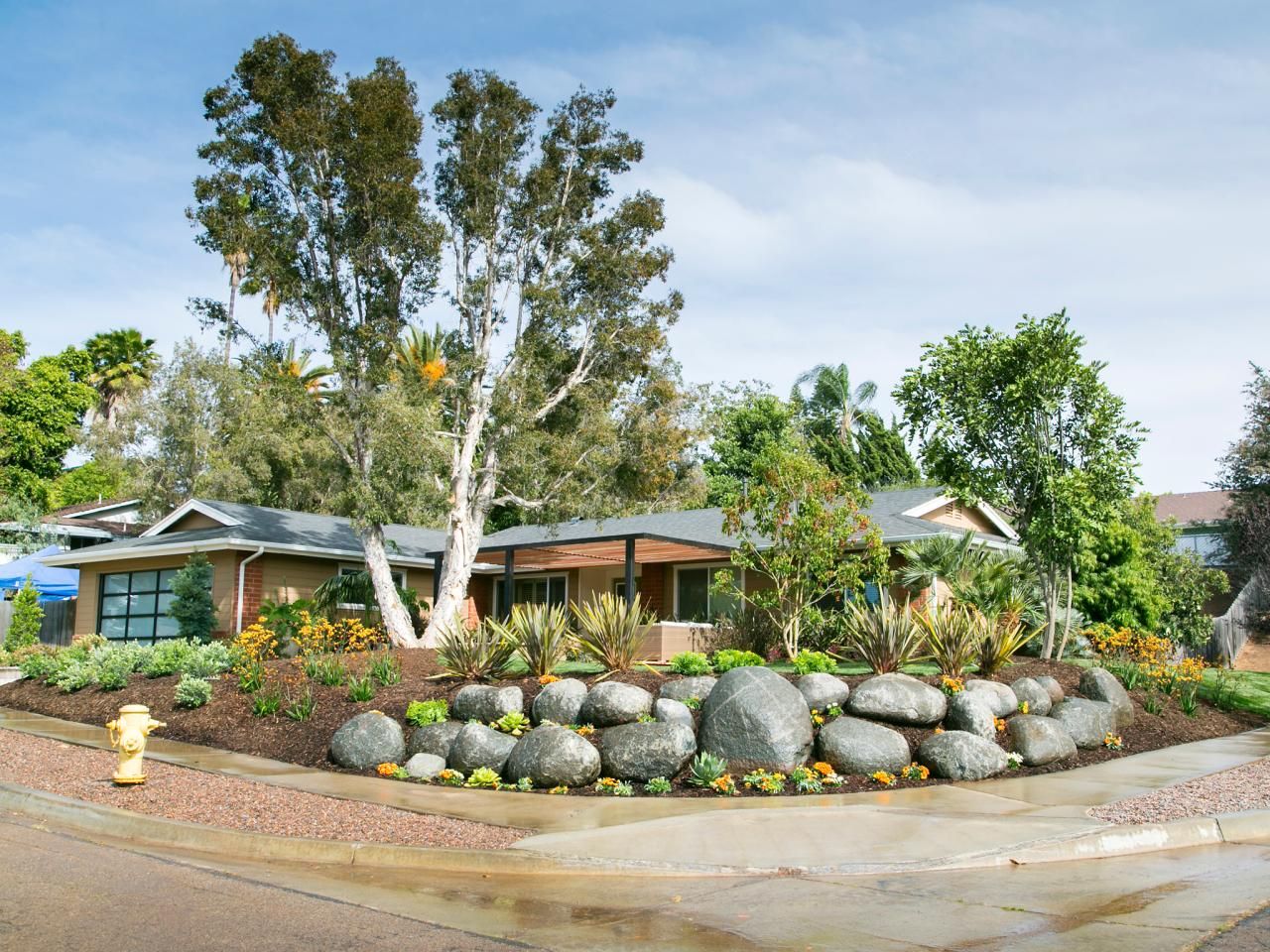
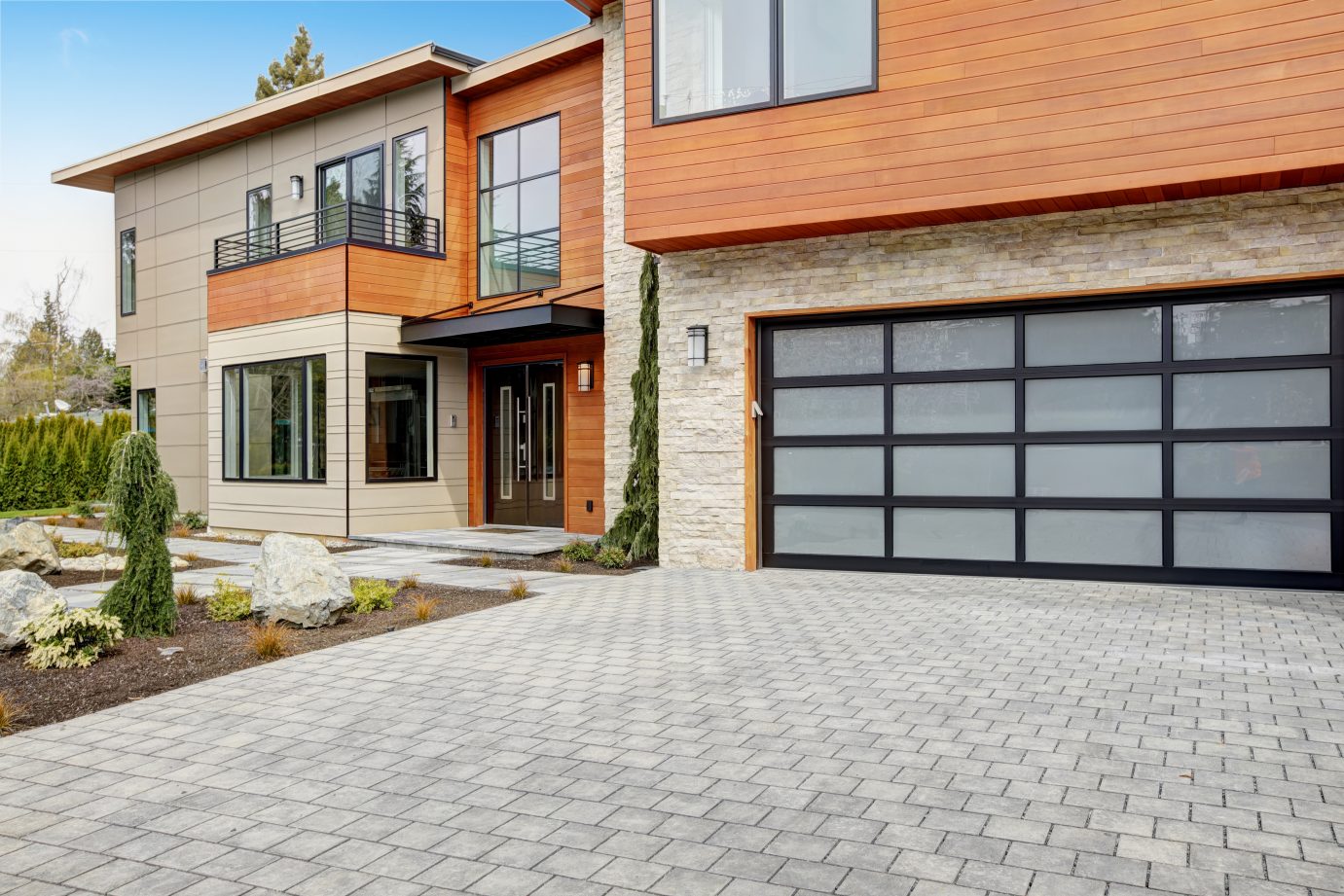
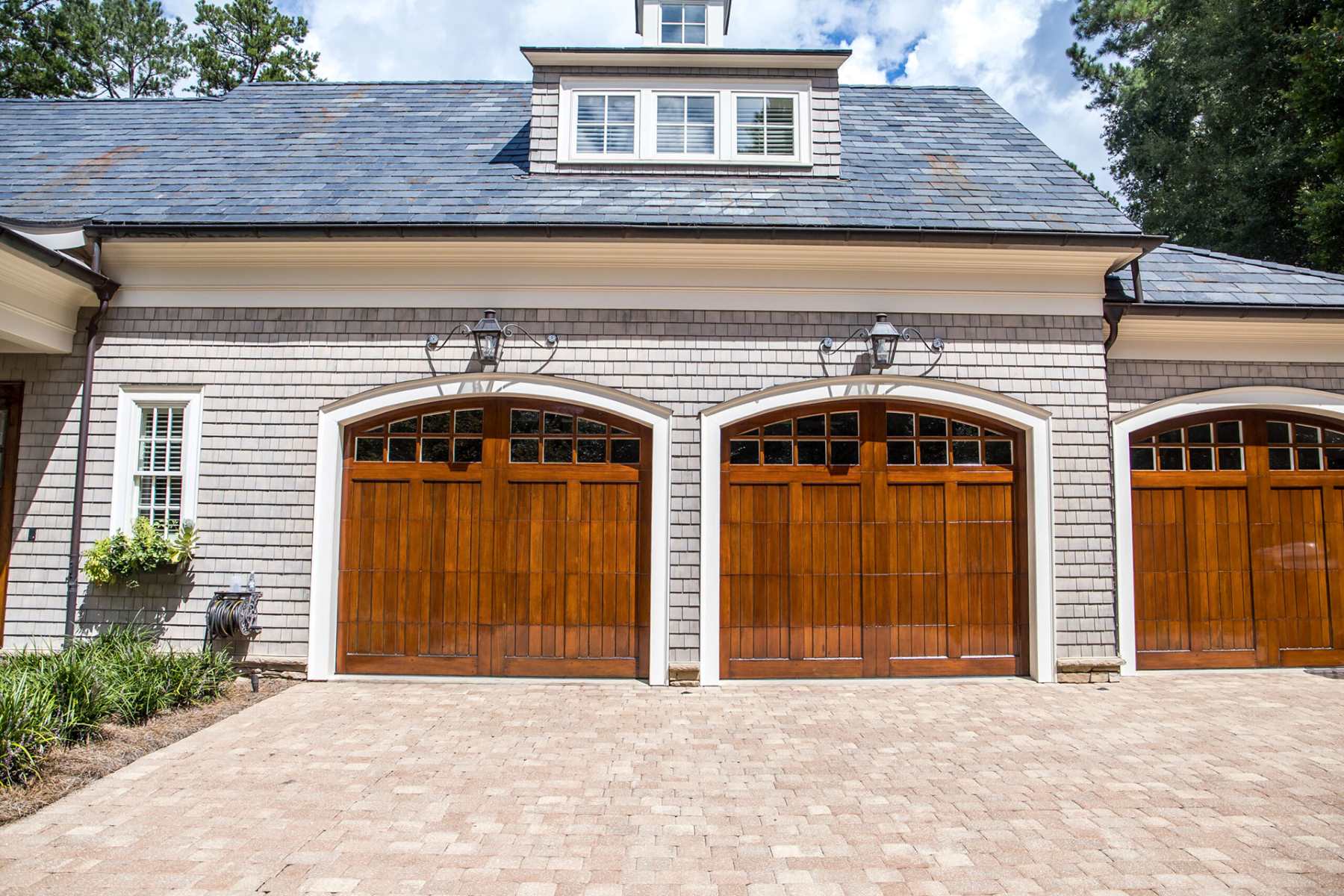
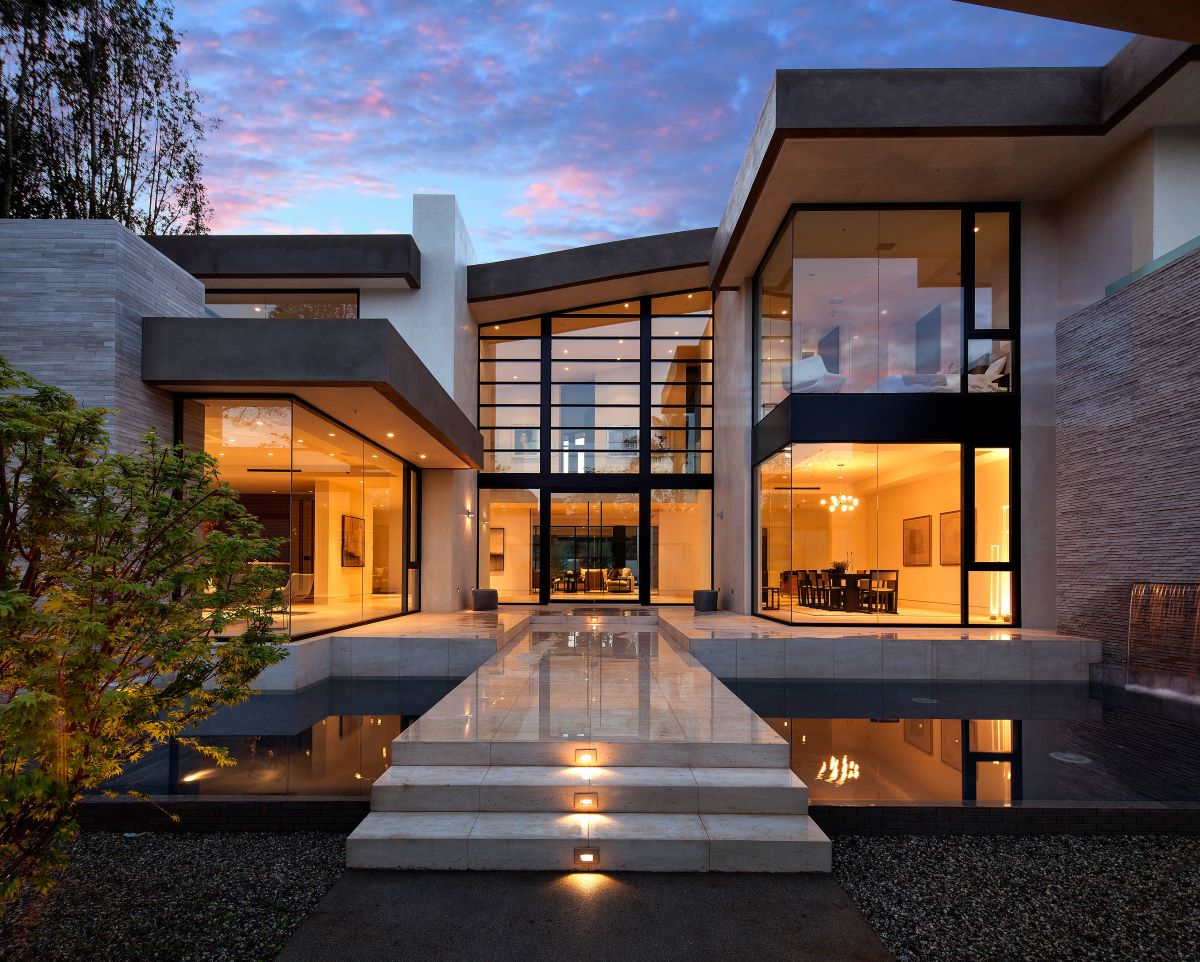
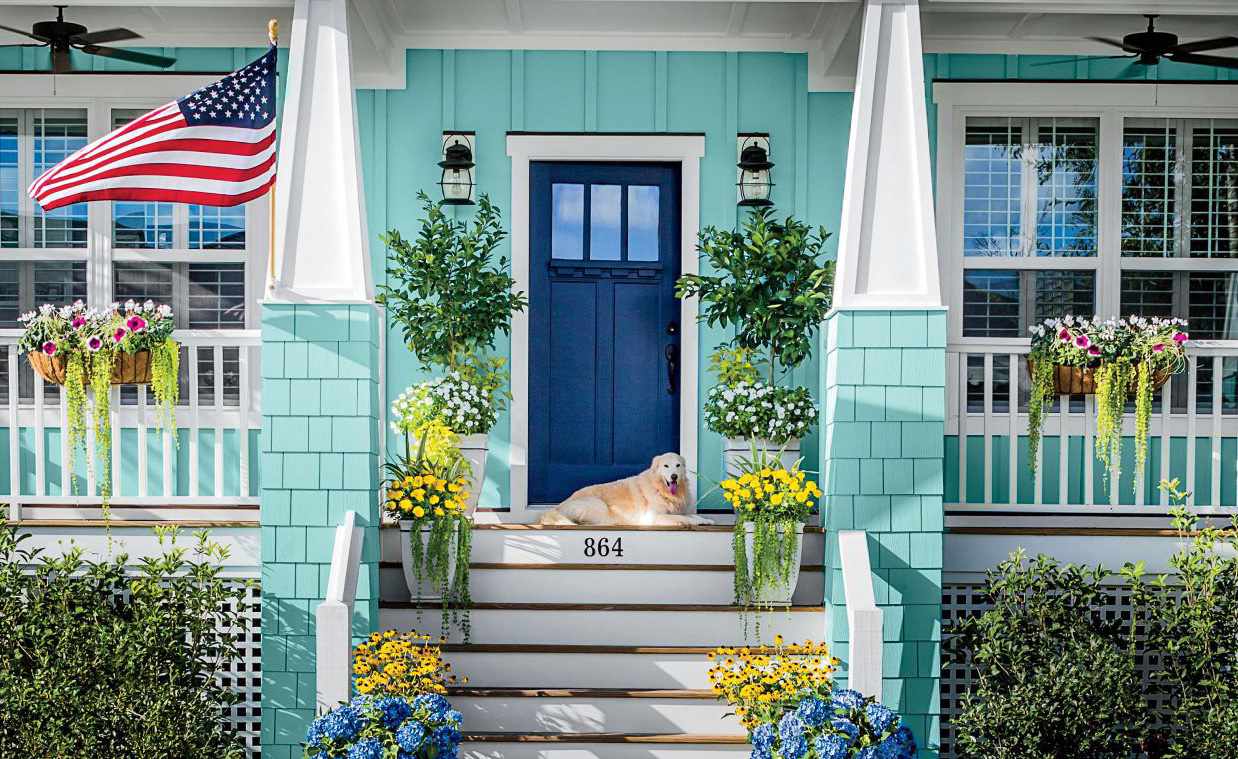
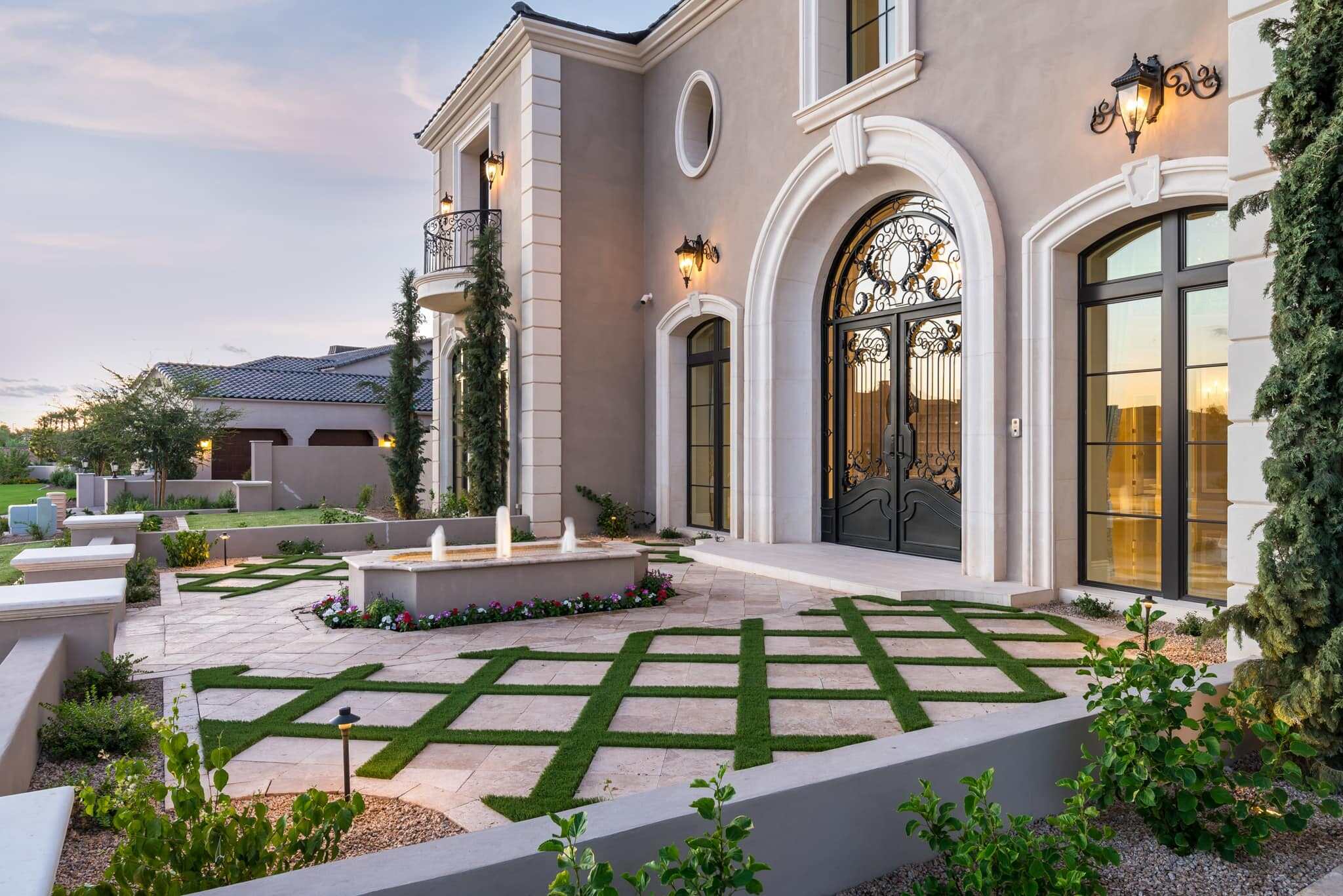
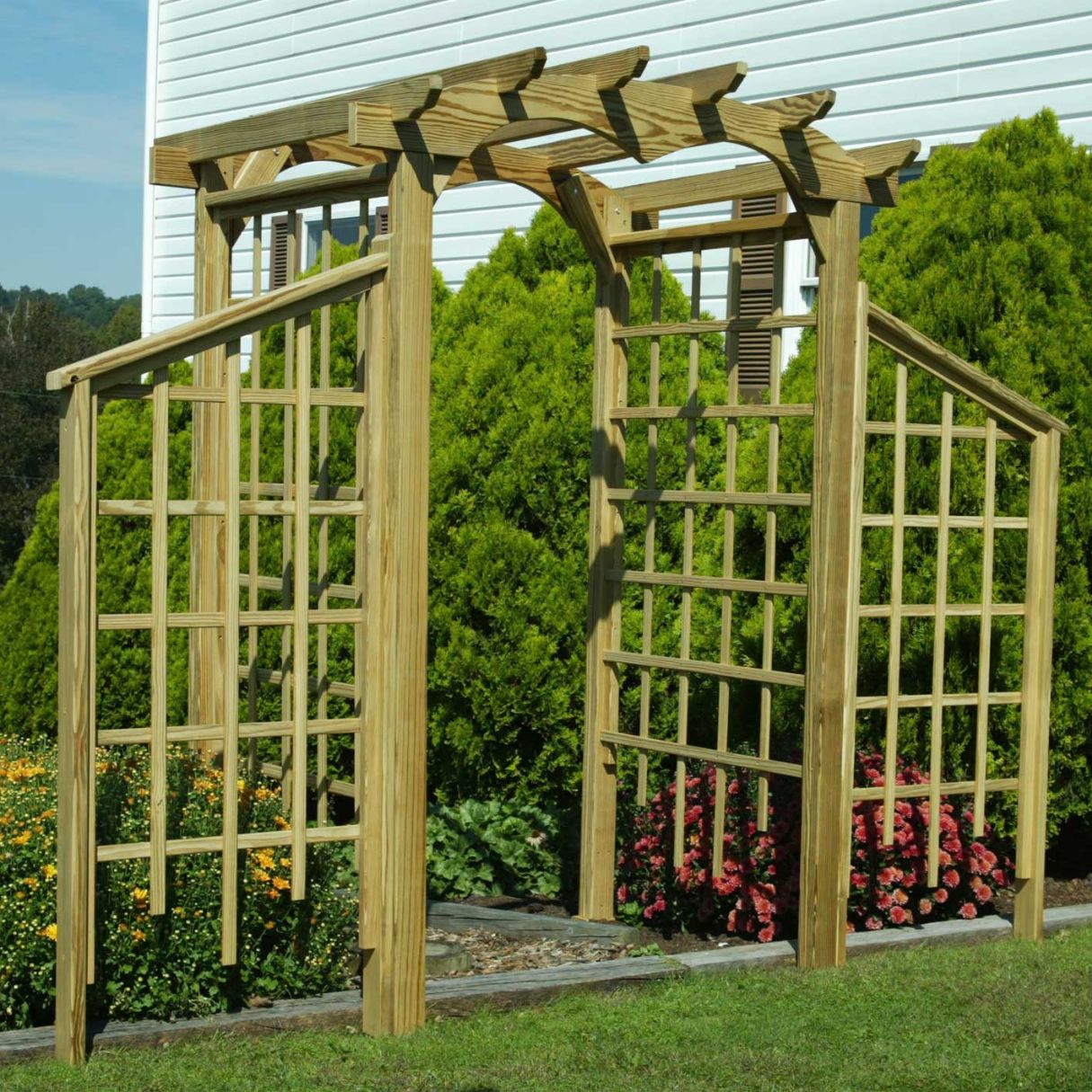
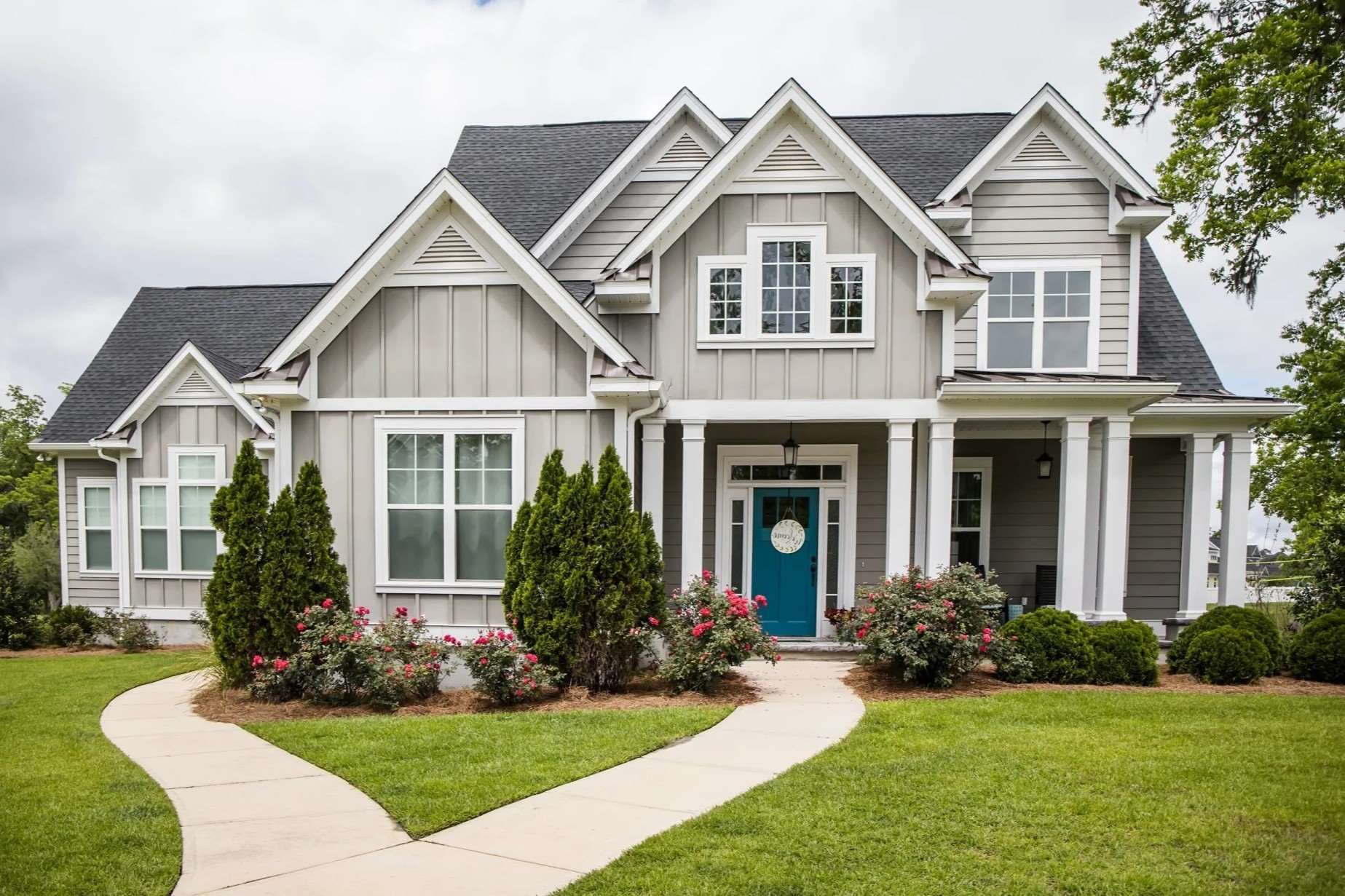
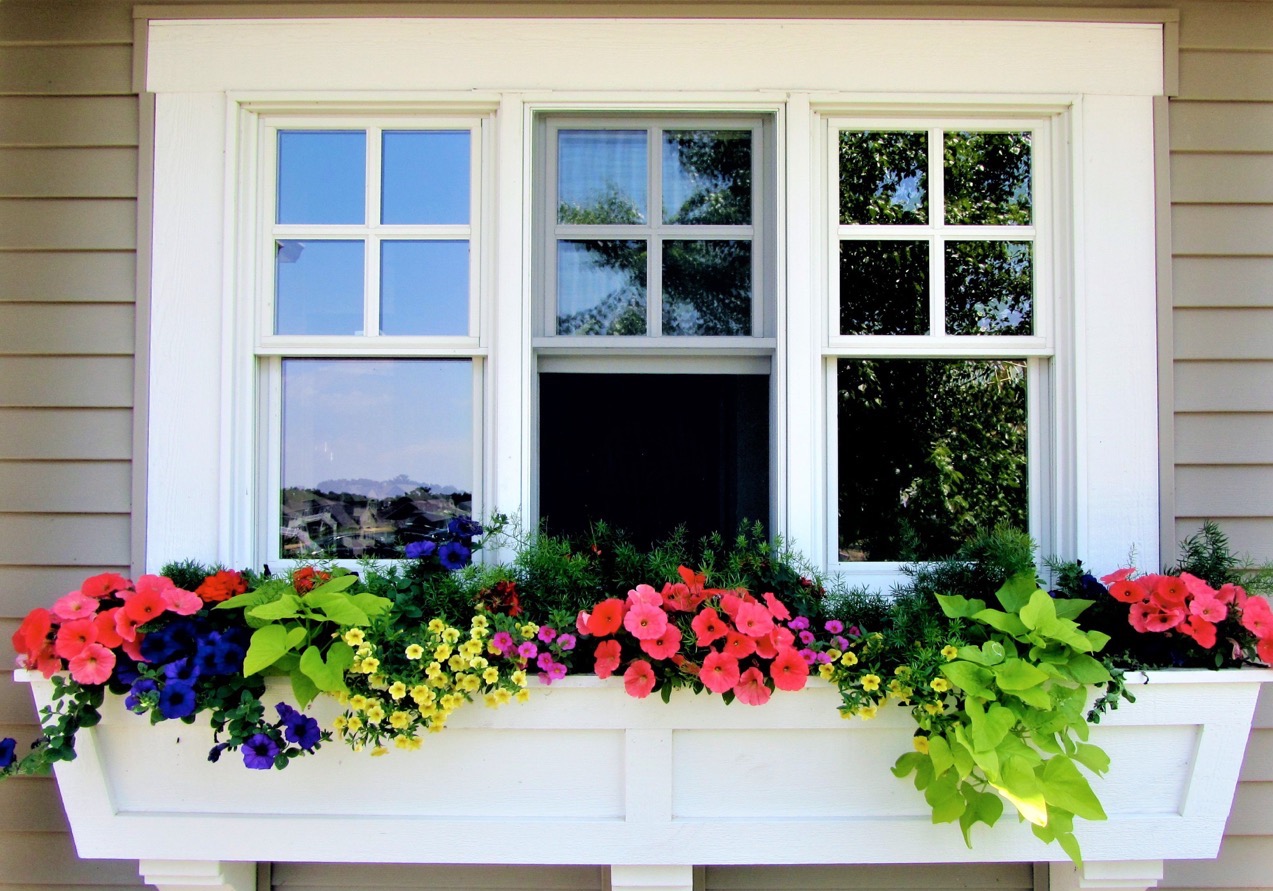
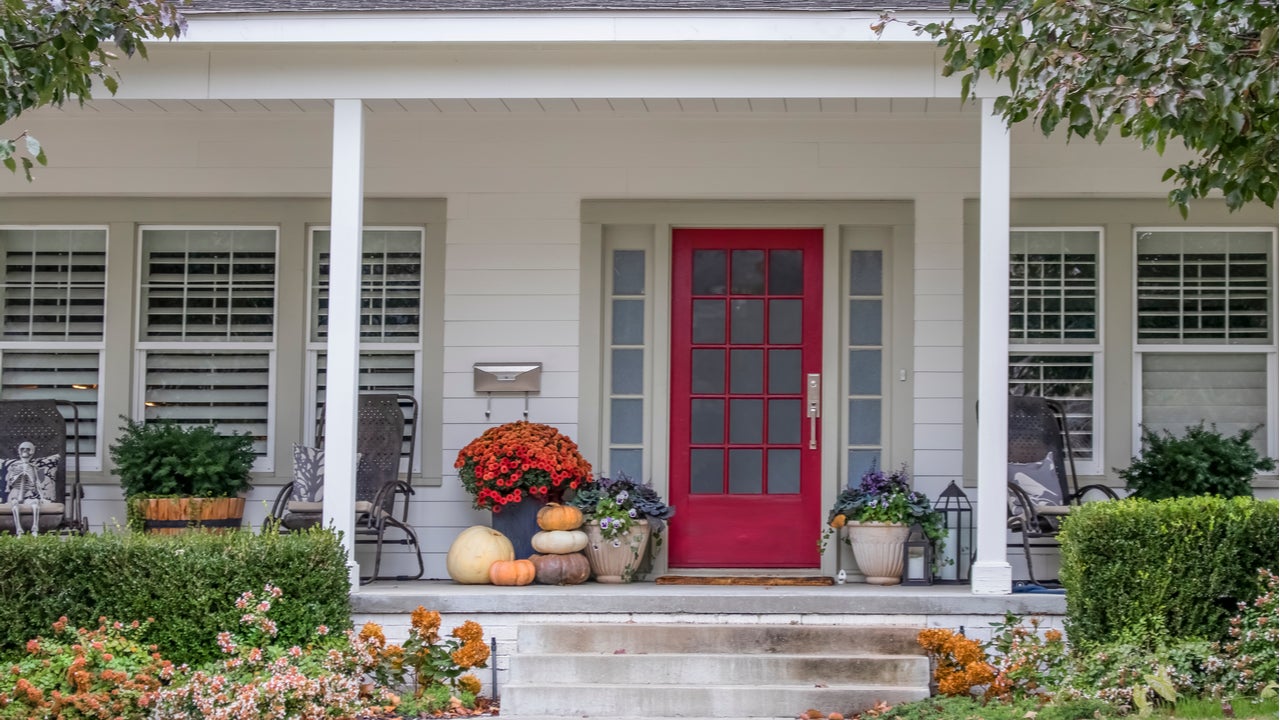

0 thoughts on “20 Exterior Entryway Designs With Charming Curb Appeal”